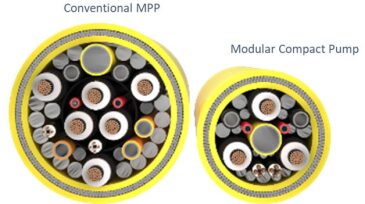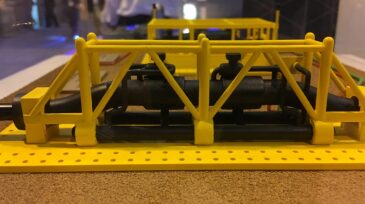Offshore/subsea systems
Vår Energi ASA and partners have officially sanctioned the Previously Produced Fields Project in the Greater Ekofisk Area. The redevelopment is expected to add high-value barrels starting in 2028, extending the production life of one of Norway’s key offshore regions.
Sponsored
As HPHT wells push equipment to the edge of material limits, operators are turning to advanced thermoplastics and sealed electrical assemblies to maintain system integrity. From ESP insulation to BOP control systems, the right component design can prevent failures, lower intervention costs, and extend equipment life in the harshest offshore environments.
The new development is estimated to hold 46 million bbl of recoverable oil and is planned to start up in late 2028.
-
The paper provides a fast-track approach to perform screening assessment of multiple subsea concepts.
-
As the hunger for data grows, long stepouts become more common, and fiber communication becomes standard, the use of fiber in subsea oil and gas fields is set to increase.
-
The latest entrants to tackle the development of barrier-fluid-less subsea pumps are Saipem and Curtiss-Wright Corp., who agreed to collaborate in designing and building pumps for water treatment and injection.
-
The JIP aims to bring to market a single-phase subsea boosting system that does not require barrier fluid or a mechanical seal.
-
An increasingly buzzy term tossed around at industry events, “digital twin” is leveraging data analytics, machine learning, and artificial intelligence to improve efficiencies from design to decommissioning.
-
When two engineers lost their jobs during the industry downturn, they used the misfortune as an opportunity to develop an innovative concept that aims to make it a lot easier to move subsea gas long distances.
-
Subsea 7 completed the acquisition of Siem Offshore Contractors along with a cable-lay vessel and a support vessel.
-
Aquabotix’s SwarmDiver technology marks a major milestone in the growing trend toward swarm-deployed underwater vehicles.
-
We don’t include a structure like the Eiffel Tower with separators, pumps, and compressors on the top observation platform in an onshore development plan. And yet, how many jacket platforms are there around the world?
-
Subsea pumps are used for gas/liquid separation, subsea compression, and subsea boosting. Solutions aiming at cost reductions are crucial to make subsea processing projects feasible. A cost- and complexity-reduction solution for the subsea electrical power supply is a critical consideration.













